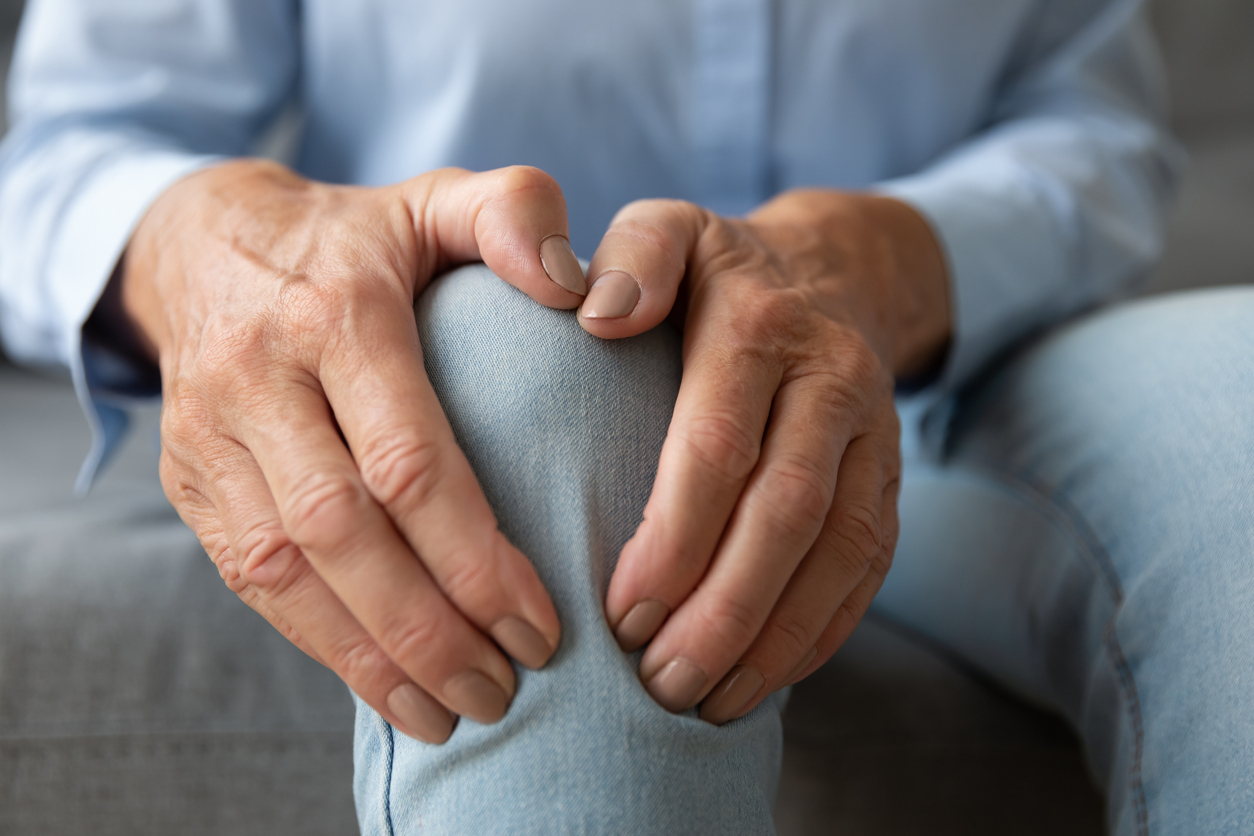2025-09-17
Osteoarthritis and Ayurveda: balance restored?
Geriatrics
By Ana Espino | Published on september 17, 2025 | 3 min read
#Osteoarthritis #Ayurveda
Primary knee osteoarthritis is a common degenerative condition, causing chronic pain, joint stiffness, and functional loss, with a major impact on patients’ quality of life. Despite the range of available treatments, conventional options remain largely symptomatic: analgesics, anti-inflammatory drugs, or injections.
However, these approaches show limited long-term effectiveness and are often associated with adverse effects, particularly gastrointestinal or cardiovascular. Moreover, no conventional treatment currently slows the structural progression of the disease.
In this context, the therapeutic challenge is to identify safe, effective, and sustainable strategies capable of relieving symptoms while improving joint function, without major side effects. Ayurveda, the traditional Indian system of medicine, proposes multimodal protocols combining local procedures and oral formulations, grounded in a holistic approach. This study aims to assess the efficacy and safety of a multimodal Ayurvedic regimen, compared to conventional treatment, in patients with primary knee osteoarthritis.
An open-label randomized controlled trial was conducted with 150 patients diagnosed with primary knee osteoarthritis, divided into two groups:
The intervention lasted 180 days, with evaluations at multiple time points on clinical criteria (pain, stiffness, mobility), biological markers, radiological data, quality of life, and analgesic use.
Preliminary results show significant pain reduction (VAS), improved joint function (WOMAC), and reduced inflammatory markers in the Ayurveda group. Patients in this group also reported decreased analgesic use and a notable improvement in quality of life, with no major adverse effects. Radiological data suggested stabilization of joint progression in some patients.
Knee osteoarthritis remains a major public health challenge, due to its functional impact, progressive course, and the limitations of current treatments. The therapeutic goal is to offer effective, better-tolerated alternatives that improve symptoms and quality of life while limiting side effects.
In this context, the study evaluated the value of a multimodal Ayurvedic regimen, combining local and systemic treatments, in the management of osteoarthritis. The results confirm significant improvements in clinical and biological outcomes, good tolerance of the regimen, and a positive impact on reducing medication use.
Nevertheless, study limitations remain and justify further research. Future studies should include larger multicenter trials, long-term follow-up to better assess durability, and the use of more robust outcome measures, particularly imaging and biomarkers.
In addition, direct comparisons with other non-pharmacological approaches could help to better position Ayurveda within an integrative care strategy tailored to patients with osteoarthritis.
About the author – Ana Espino
As a scientific writer, Ana is passionate about bridging the gap between research and real-world impact. With expertise in immunology, virology, oncology, and clinical studies, she makes complex science clear and accessible. Her mission: to accelerate knowledge sharing and empower evidence-based decisions through impactful communication.
#Osteoarthritis #Ayurveda
Primary knee osteoarthritis is a common degenerative condition, causing chronic pain, joint stiffness, and functional loss, with a major impact on patients’ quality of life. Despite the range of available treatments, conventional options remain largely symptomatic: analgesics, anti-inflammatory drugs, or injections.
However, these approaches show limited long-term effectiveness and are often associated with adverse effects, particularly gastrointestinal or cardiovascular. Moreover, no conventional treatment currently slows the structural progression of the disease.
In this context, the therapeutic challenge is to identify safe, effective, and sustainable strategies capable of relieving symptoms while improving joint function, without major side effects. Ayurveda, the traditional Indian system of medicine, proposes multimodal protocols combining local procedures and oral formulations, grounded in a holistic approach. This study aims to assess the efficacy and safety of a multimodal Ayurvedic regimen, compared to conventional treatment, in patients with primary knee osteoarthritis.
Lasting relief or placebo effect?
An open-label randomized controlled trial was conducted with 150 patients diagnosed with primary knee osteoarthritis, divided into two groups:
- Ayurveda group (n=75): multimodal treatment including Matra Basti (medicated enema), Janu Basti (oil-based local therapy), and two oral formulations (Laksha Guggulu and Muktashukti Bhasma).
- Control group (n=75): standard management according to conventional guidelines.
The intervention lasted 180 days, with evaluations at multiple time points on clinical criteria (pain, stiffness, mobility), biological markers, radiological data, quality of life, and analgesic use.
Preliminary results show significant pain reduction (VAS), improved joint function (WOMAC), and reduced inflammatory markers in the Ayurveda group. Patients in this group also reported decreased analgesic use and a notable improvement in quality of life, with no major adverse effects. Radiological data suggested stabilization of joint progression in some patients.
An integrative path to explore
Knee osteoarthritis remains a major public health challenge, due to its functional impact, progressive course, and the limitations of current treatments. The therapeutic goal is to offer effective, better-tolerated alternatives that improve symptoms and quality of life while limiting side effects.
In this context, the study evaluated the value of a multimodal Ayurvedic regimen, combining local and systemic treatments, in the management of osteoarthritis. The results confirm significant improvements in clinical and biological outcomes, good tolerance of the regimen, and a positive impact on reducing medication use.
Nevertheless, study limitations remain and justify further research. Future studies should include larger multicenter trials, long-term follow-up to better assess durability, and the use of more robust outcome measures, particularly imaging and biomarkers.
In addition, direct comparisons with other non-pharmacological approaches could help to better position Ayurveda within an integrative care strategy tailored to patients with osteoarthritis.
Read next: Valgus brace: effective but tolerable?
About the author – Ana Espino
PhD in Immunology, specialized in Virology

Last press reviews
Turner syndrome and autoimmunity: an underestimated association?

By Ana Espino | Published on December 8, 2025 | 3 min read<br>
Could cinnamon become a natural treatment for metabolic syndrome?

By Lila Rouland | Published on December 5, 2025 | 3 min read<br><br>...
Who is afraid of Christmas? Do holidays trigger psychiatric crises?

By Carolina Lima | Published on Décember 4, 2025 | 3 min read